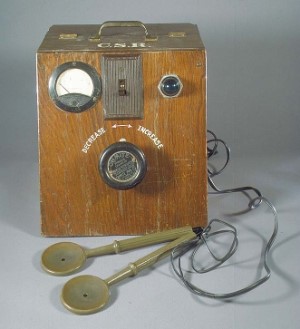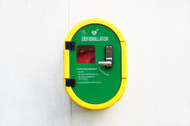All About Defibrillators
Posted by DS Medical on 13th Jun 2023
Time is of the essence when it comes to saving lives in emergency situations. One of the most crucial tools we have at our disposal is the defibrillator, a device that can quickly restore a regular heart rhythm in patients experiencing cardiac arrest.
A brief history:
The first external defibrillator (the most similar to what we know today) was invented in 1930 by Electrical Engineer William Kouwenhoven, who studied the relation between electric shocks and its effects on the human heart.
Using Kouwenhoven’s observations, a cardiac surgeon, Claude Beck, began delivering AC directly to the exposed hearts of animals. He wanted to continue experimenting the device on animals, except during surgery on a 14-year-old patient, their heart stopped – and out of desperation Beck decided to use this simple defibrillator to bring his patient back to life.
It took many decades of further research before the technique was refined further and the first portable defibrillators were used outside of hospital. The ‘father’ of the modern AED, Professor James Francis "Frank" Pantridge, was a physician and cardiologist from Northern Ireland who transformed emergency medicine and paramedic services with the invention of the portable defibrillator, in the early 1960’s.

Source: www.communityheartbeat.org.uk
How they work :
Defibrillators work by delivering an electric shock to the heart, which can help to reset the heart's rhythm and restore normal blood flow. They are most commonly used in emergency situations, such as in hospitals, clinics, and ambulances.
One of the key advantages of defibrillators is their speed and effectiveness. When used promptly, they can significantly increase the chances of survival for patients experiencing cardiac arrest. Studies have shown that the chances of survival decrease by around 10% for every minute that passes without defibrillation, making prompt use of a defibrillator crucial in saving lives.
Another advantage of defibrillators is their ease of use. Modern defibrillators are designed to be user-friendly, with clear instructions and visual aids that guide the user through the process. This means that even individuals without medical training can use them effectively in emergency situations.
Perhaps the most significant advantage of defibrillators, however, is their portability. They can be easily transported in medical bags or on-board ambulances, allowing medical professionals to provide life-saving treatment in a variety of settings.
Overall, defibrillators are a vital tool for any medical professional, sports clubs, schools, or communities who provides emergency care. By providing prompt and effective treatment for patients experiencing cardiac arrest, they can significantly improve patient outcomes and save lives.
To see our range of defibrillators please click here.



